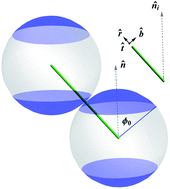Self-assembly of three-dimensional open structures using patchy colloidal particles
Abstract
Open structures can display a number of unusual properties, including a negative Poisson's ratio, negative thermal expansion, and holographic elasticity, and have many interesting applications in engineering. However, it is a grand challenge to self-assemble open structures at the colloidal scale, where short-range interactions and low coordination number can leave them mechanically unstable. In this paper we discuss the self-assembly of three-dimensional open structures using triblock Janus particles, which have two large attractive patches that can form multiple bonds, separated by a band with purely hard-sphere repulsion. Such surface patterning leads to open structures that are stabilized by orientational entropy (in an order-by-disorder effect) and selected over close-packed structures by vibrational entropy. For different patch sizes the particles can form into either tetrahedral or octahedral structural motifs which then compose open lattices, including the pyrochlore, the hexagonal tetrastack and the perovskite lattices. Using an analytic theory, we examine the phase diagrams of these possible open and close-packed structures for triblock Janus particles and characterize the mechanical properties of these structures. Our theory leads to rational designs of particles for the self-assembly of three-dimensional colloidal structures that are possible using current experimental techniques.


 Please wait while we load your content...
Please wait while we load your content...